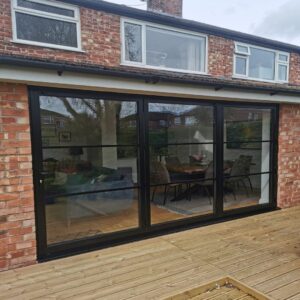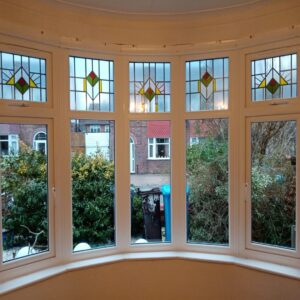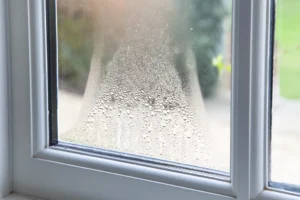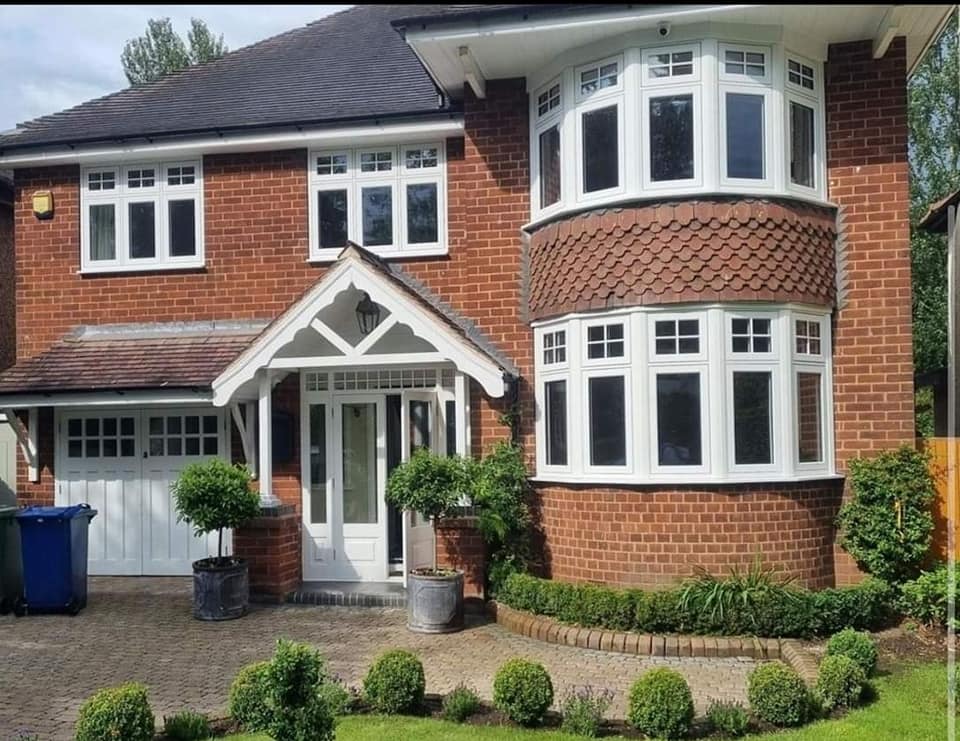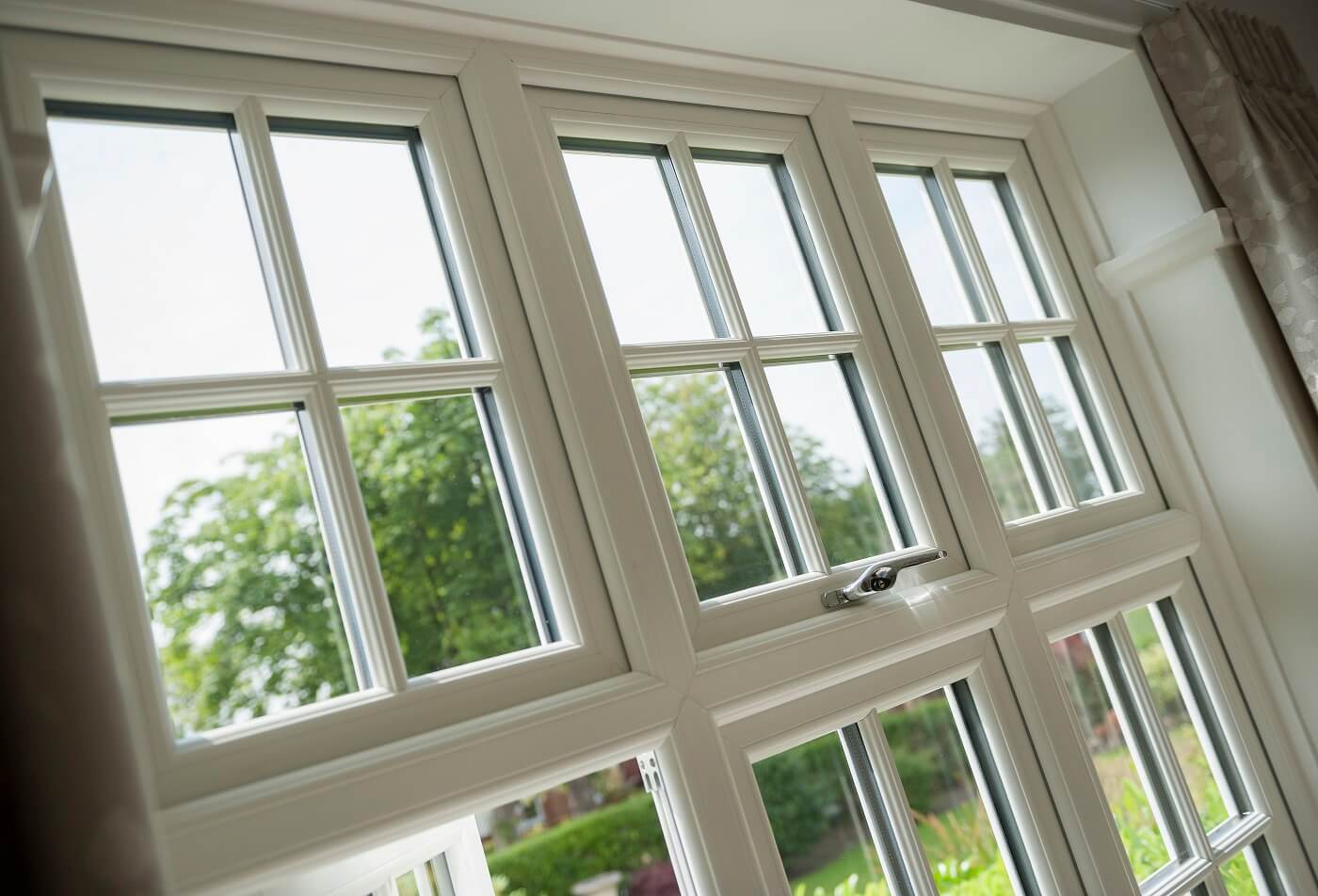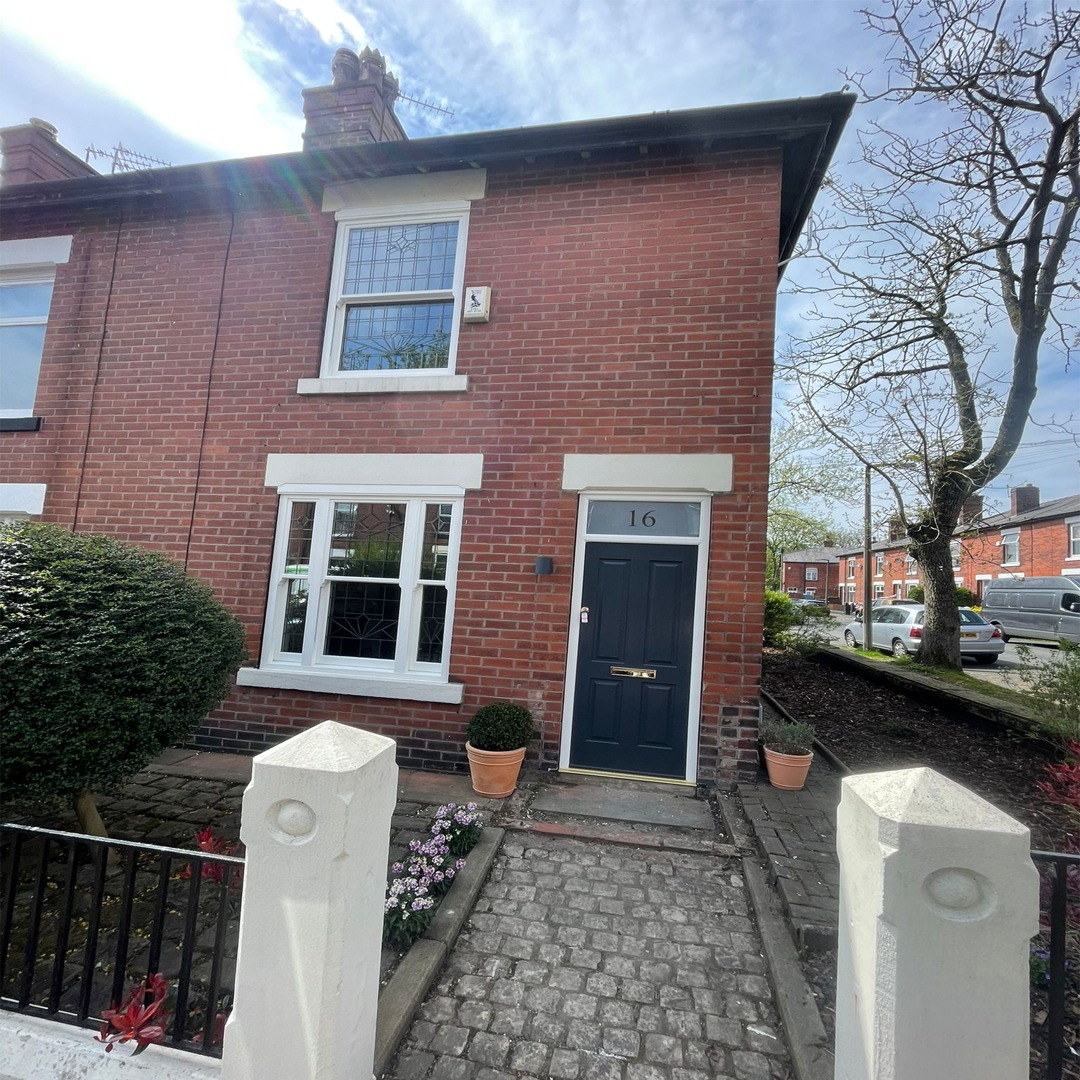In this article, we will cover:
- What a UPVC profile is
- The different types of UPVC profiles
- Different window styles

Five of the Best UPVC Profiles
Profile 22 | Rehau | Liniar | Halo | Residence Collection |
The largest UPVC window and door profile in the UK, Profile 22 windows incorporate triple glazing seamlessly. | A unique compound ensures the UPVC retains its high gloss finish for many years. | Offers a superior thermal performance, due to unique 4 and 6 multichambered profiles. | A unique five-chambered design offers unbeatable thermal performance. | Unique designs (R9 and R7) replicate 19th-century timber windows. |
Windows have Secured by Design accreditation. | Energy-efficient and low-maintenance. | Can be reused and recycled. | Durable, secure, and weatherproof. | A range of bespoke options is available. |
Offer a wide range of bespoke colours and finishes. | Optional steel inserts for improved strength | Cost-effective | Attractive aesthetics. | Made with British Architecture in mind. |
What is an UPVC profile?
UPVC is the abbreviated name for unplasticised polyvinyl chloride. It starts as a plastic powder, which is heated to create a liquid to inject into a mould. The mould is a long strip, ideal for manufacturing UPVC windows. Once cooled, the UPVC is cut to form the base of the frame for a double or triple-glazed window. The ‘profile’ is simply the type of UPVC window frame the UPVC is created for. Different types of windows have different UPVC profiles designed to provide structural support and solutions such as superior energy efficiency.
The different UPVC profile types
There are three main types of UPVC profiles:
- Chamfered
- Ovolo
- Flush

Chamfered
With its neat and linear look, the Chamfered profile is a popular choice for modern homes. The clean lines and flat edges fit a contemporary aesthetic, but the unfussy finish makes them incredibly versatile.
Ovolo
Rounded edges and sculptured framing make Ovolo windows the perfect profile for a traditional yet timeless look. Ideal for heritage properties, it can also enhance modern properties, lending character and elegance to contemporary country homes with its soft sightlines and curved shape.
Flush
A flush UPVC profile is seen in casement windows that fit flush against the window frame, as opposed to overlapping the frame, as in stormproof windows. It is characterised by sleek lines and has a timeless appearance.
The profile also refers to the manufacturer/supplier.
The top UPVC manufacturers operating in the UK are, in alphabetical order:
- Eurocell
- GAP Ltd
- Halo
- Liniar
- Profile 22
- Rehau
- Residence Collection
- Selecta Systems
- Veka
Eurocell
Operating since 1974, Eurocell is regarded as the UK’s first all-round UPVC company – manufacturing, supplying, distributing and recycling UPVC products.
GAP Ltd
Starting life in Lancashire in 1993, GAP now has 40 depots across the UK, supplying commercial and residential markets.
Halo
Halo windows offer a unique five-chambered design for unmatched thermal performance. A good eco-friendly choice, Halo windows can help you lower your heating bills and carbon footprint. The profile is also exceptionally durable, secure and weatherproof.
Liniar
A forward-thinking company, Liniar offers the latest in double-glazing technology, trapping warm pockets of air between 4 and 6 chambers to improve thermal efficiency.
Profile 22
Usually battling with Rehau for UPVC window supremacy, Profile 22 boasts the UK’s largest UPVC windows and doors profile and easily incorporates triple-glazing. Thermal inserts can be added to the windows to further enhance insulation.
Residence Collection
Arguably the best UPVC profile for period properties, Residence Collection offer bespoke designs and replicas of 19th-century British architecture.
Selecta Systems
A family business operating under the same name for 35+ years, Selecta Systems has a reputation as one of the leading industry innovators.
Veka
A German brand founded in 1969, Veka is the world’s largest manufacturer of extruded UPVC products and one of the most eco-conscious UPVC window and door suppliers in the UK.
Selecta Systems
A family business operating under the same name for 35+ years, Selecta Systems has a reputation as one of the leading industry innovators.
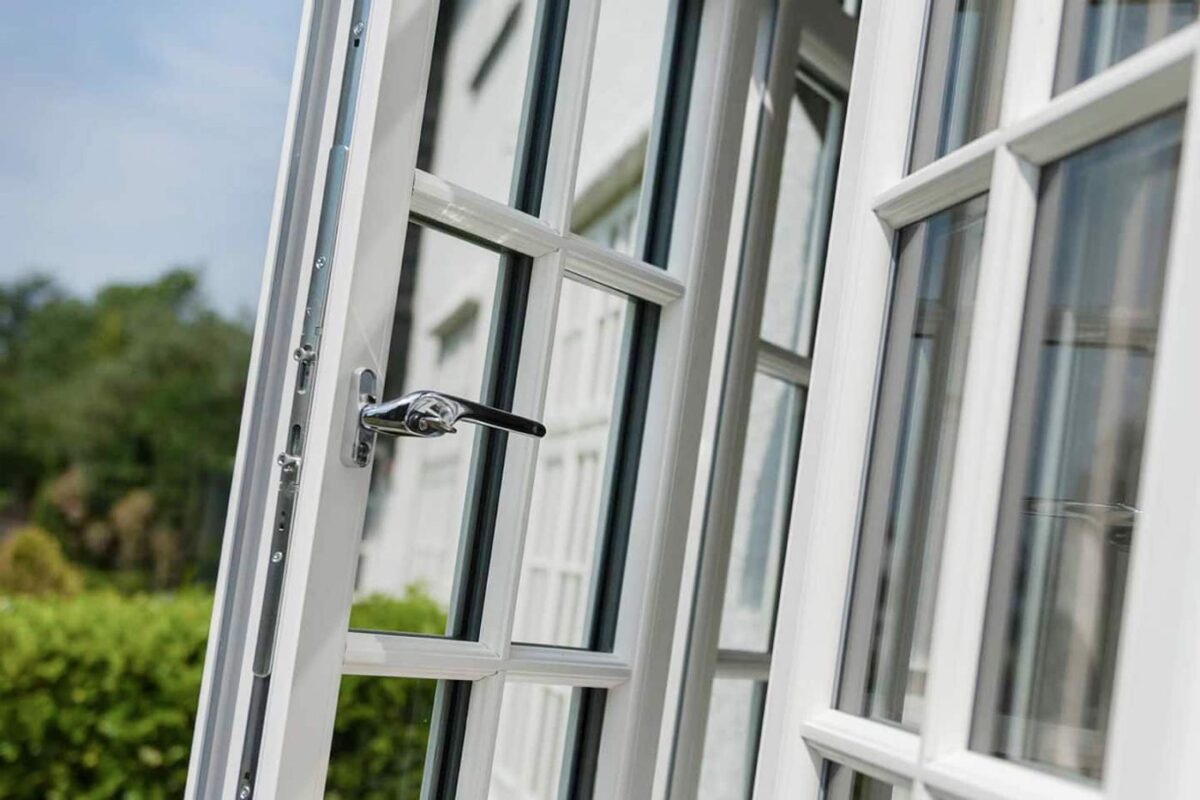
Do coloured UPVC windows matter?
Although the most popular colour of UPVC windows is still white, some customers are choosing grey, black, cream, pastel hues and even bright shades.
Coloured UPVC has the same profile as standard white but can be used to put your stamp on your home. You can opt for dual colours to match your interior and exterior architecture and decor.
Besides colours, UPVC windows are also available in wood-grain finishes, mimicking the appearance of traditional timber windows with all the benefits of UPVC. These finishes look authentic and can even be used in period properties to blend with other homes in the area.
Coloured and wood grain finishes cost a little (around 10-20%) more than plain white UPVC frames but can help you make a statement or remain sympathetic to the property’s surroundings.
There are other considerations when choosing coloured UPVC. For example, black UPVC can fade in direct sunlight, so it is best not to use it in areas of maximum sun exposure.
What about window styles?
Alongside the different UPVC profiles, you also have different styles of windows.
The main types of UPVC windows are:
- Casement
- Sliding sash
- Sliding Horizontally
- Tilt-and-Turn
- Bay
Casement
The most common type of window in modern UK homes, casement windows swing outwards on hinges, similar to a door. The entire window can be opened, providing excellent ventilation, while airtight seals mean they are energy-efficient and offer excellent insulation when closed. This type of window has locks embedded in the frame for your security and peace of mind.
Sliding Sash
Sliding sash windows feature one or more panels (sashes) which slide vertically over each other to open the window. Popular in Georgian and Victorian properties, they were traditionally made of timber but have been given a modern update with UPVC. Our sliding sash windows feature multi-point locking systems and are highly secure.
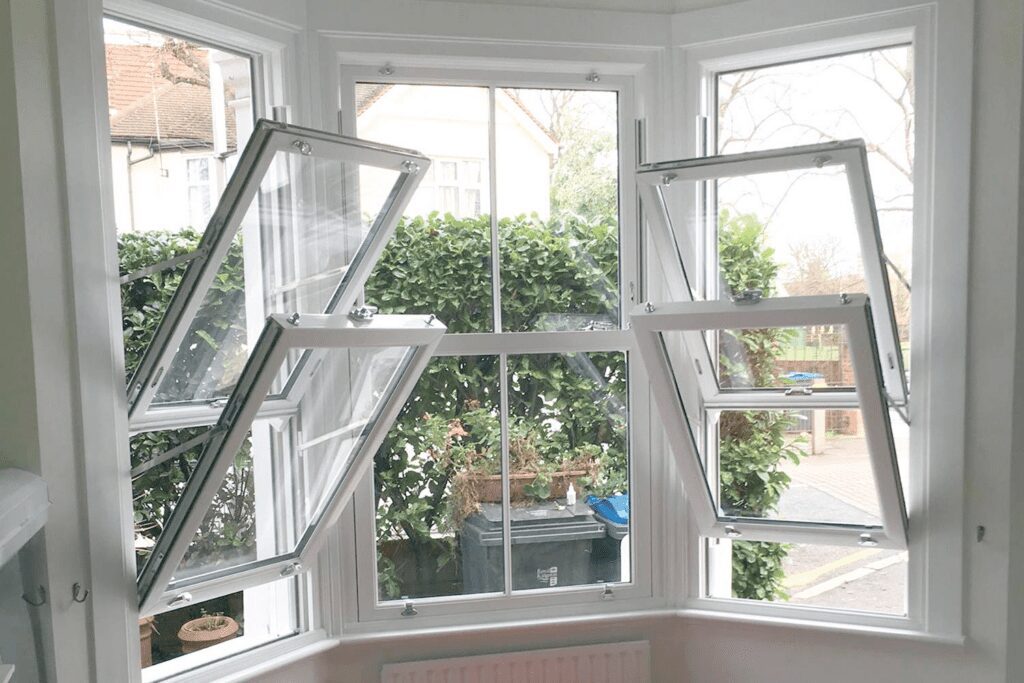
Sliding Horizontally
Like sliding patio doors, sliding windows run horizontally along a track so you can control how ‘open’ you would like them to be. They use multi-point locks, so the panels cannot be lifted out to gain entry to your home.
Tilt-and-Turn
Tilt and turn windows are a version of casement windows, where the window swings outwards vertically but can also be partially opened by tilting it inwards at the top or bottom. They are ideal for ventilating ground-floor rooms.
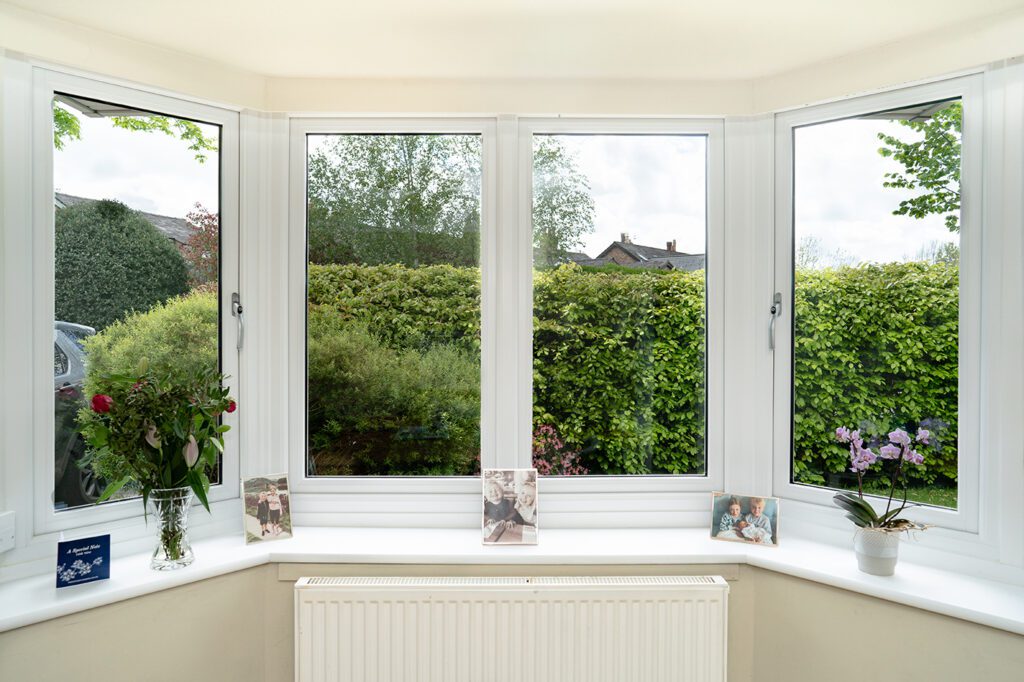
Bay
Traditionally seen in period homes but also popular for modern UK homeowners, bay windows compromise three or more windows extending outwards from your home’s exterior wall. This creates a bowed or semi-circular bay in your room, increasing the living space and flooding the room with natural light.
Each style of window offers benefits and potential drawbacks, so the decision is usually made according to your budget, personal preference and your home’s aesthetic.
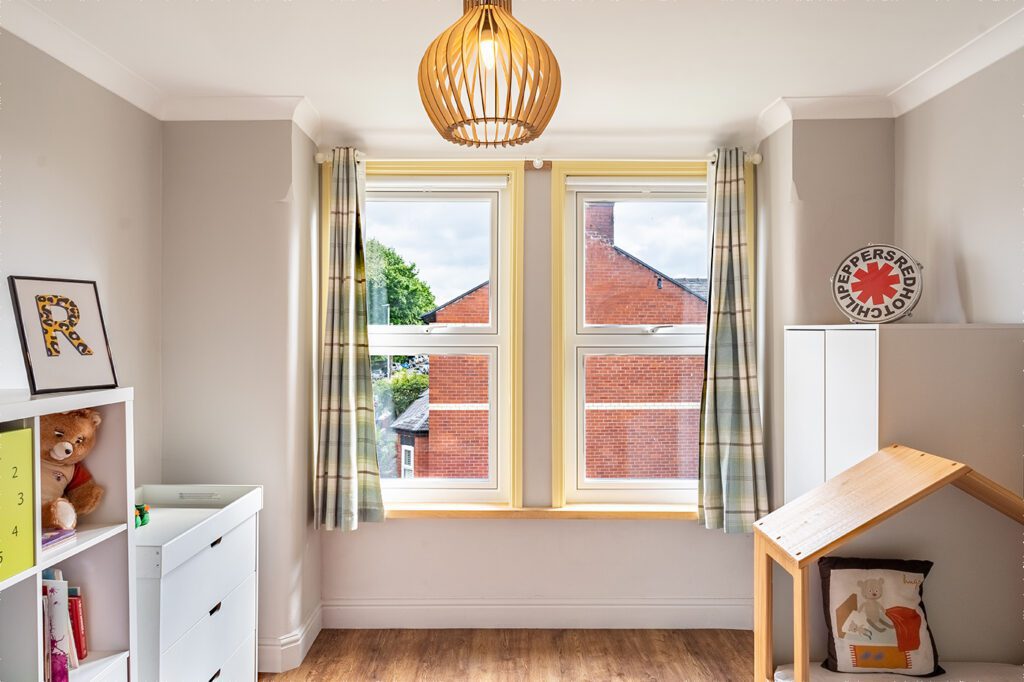
Conclusion
Given that your selection of windows can affect the overall energy efficiency, comfort and value of your home, it is important to make the right choice.
A high-quality window profile means a more effective window, but there are several excellent UPVC profiles in the UK market.
Which UPVC profile is best will depend on your specific requirements.
We cut through the jargon to help you make an informed choice. If you have any questions about our UPVC windows or alternative materials, please don’t hesitate to get in touch.
There are several ways to contact us. You can call or email us, visit us at our Altrincham showroom, or fill in our online contact form for a free, no-obligation quote. You can also find us on social media.
We look forward to hearing from you.





